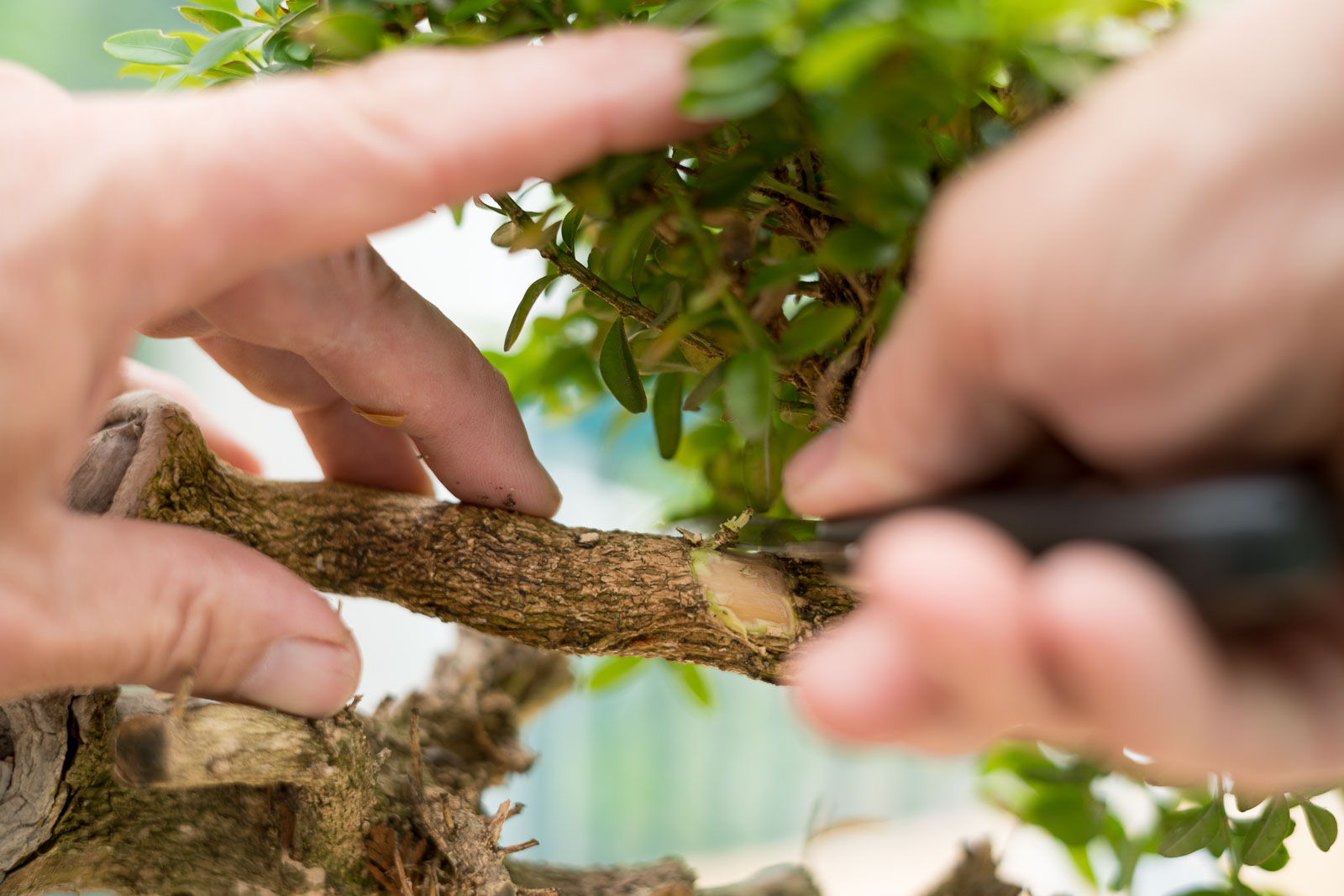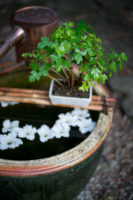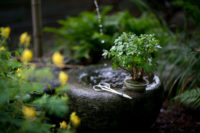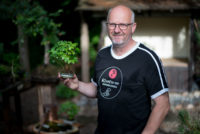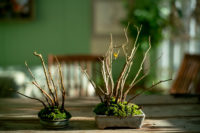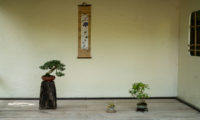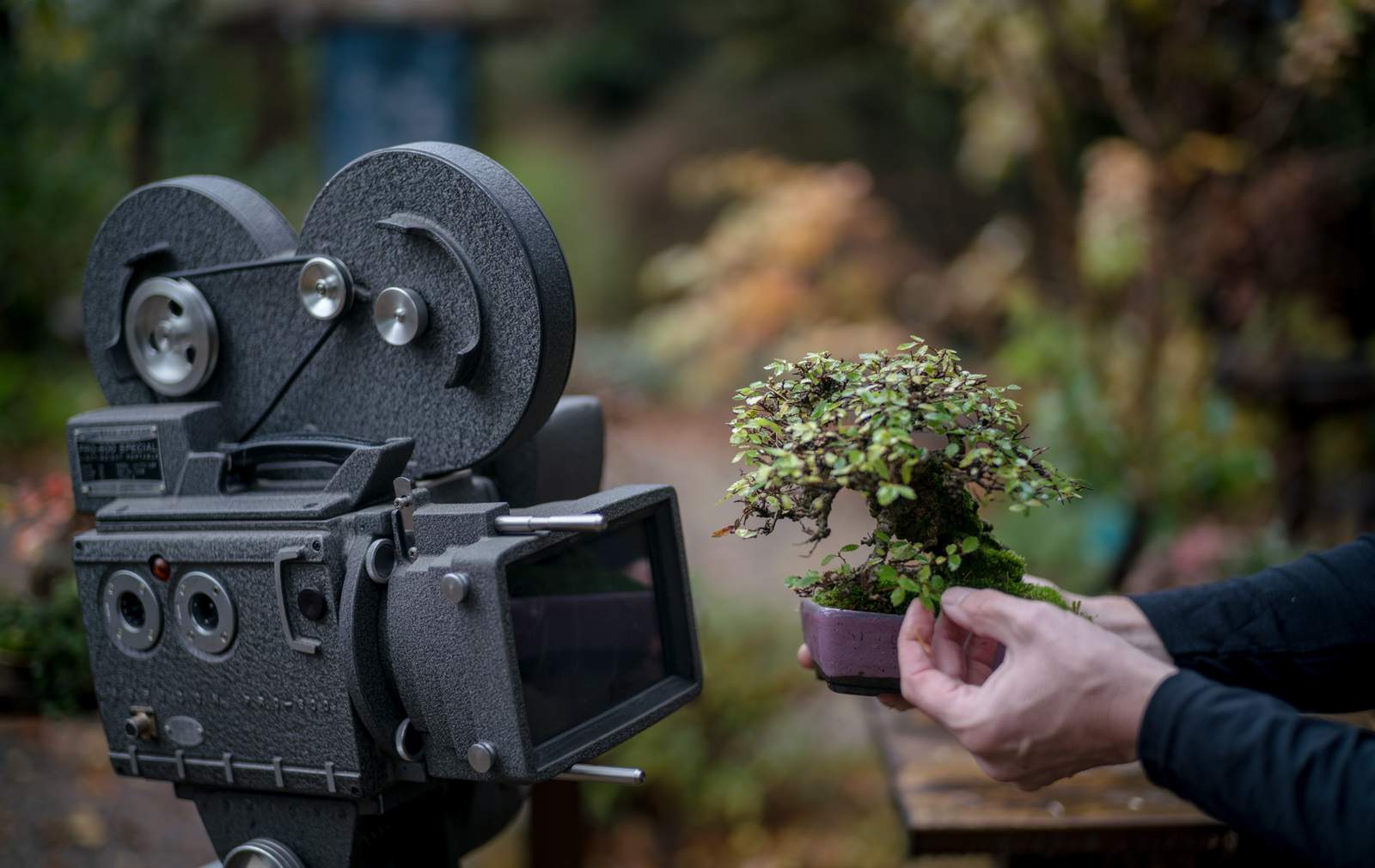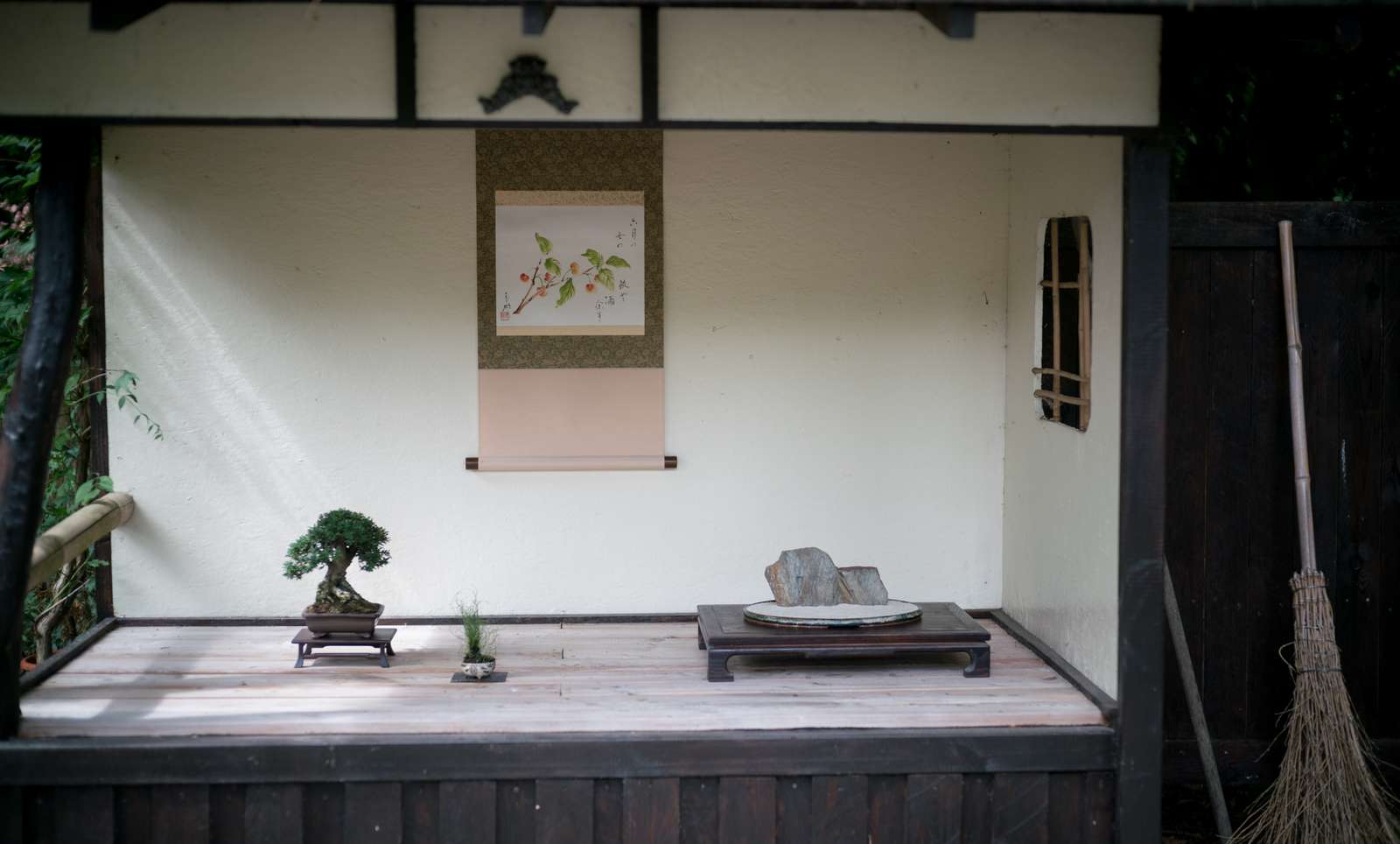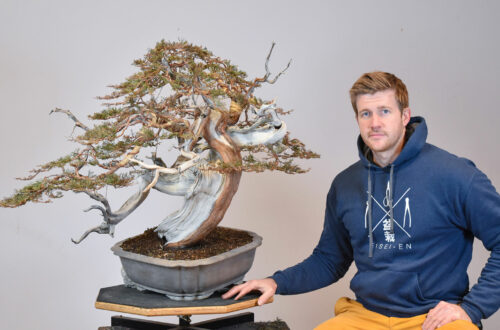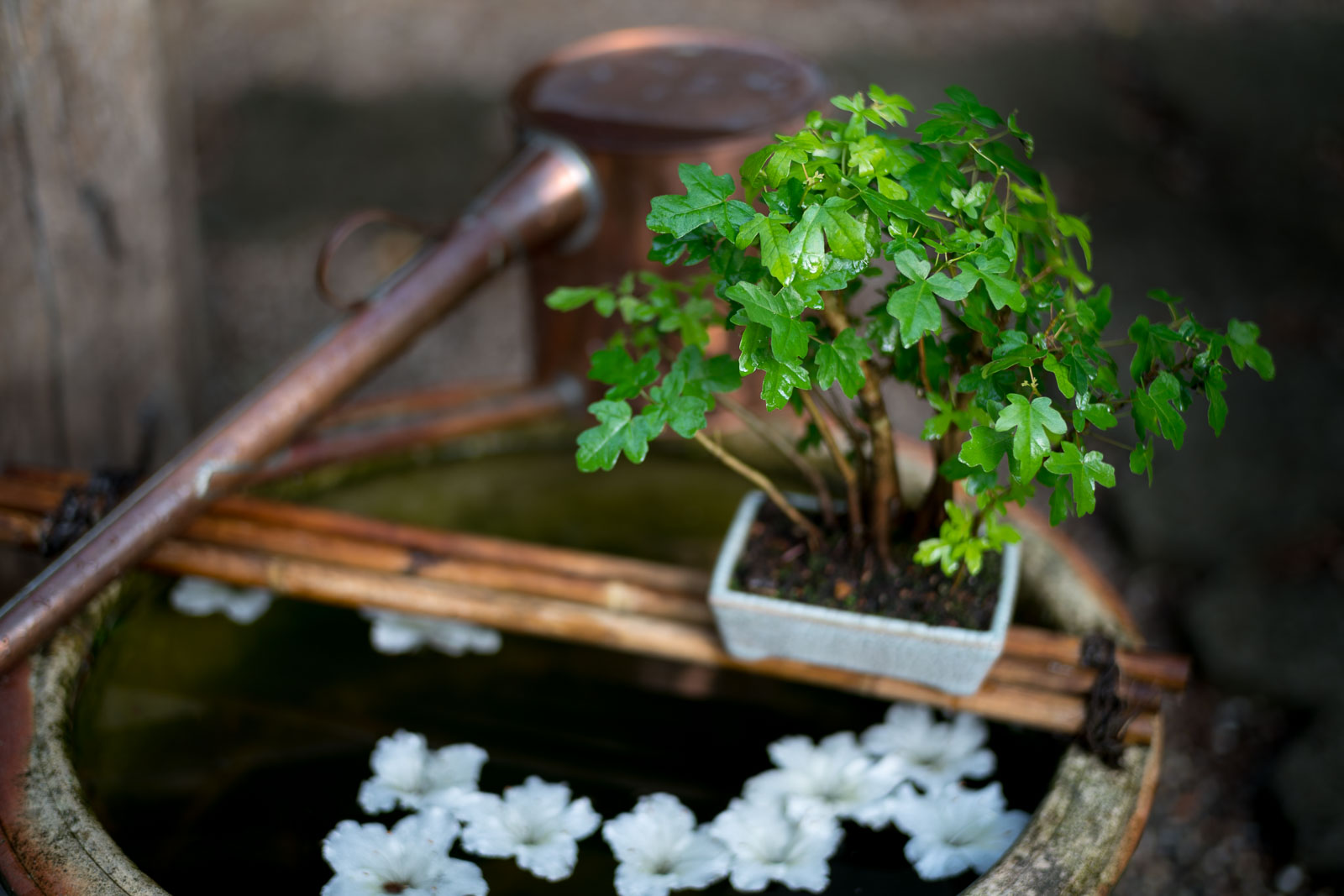
Shohin bonsai forest progress
I regularly get questions about the forests I created in the autumn of 2018 and about their progress. It has been great fun doing these small Shohin bonsai forest expressions. Also, present in my newest book “Shohin – through the Seasons”. Available at Esprit Bonsai.
At the gallery at the end of the article, you can see the start of the forest being established in 2018.

Instant beauty
It is fascinating being able to make something that has an almost instant feeling of beauty, even at an early stage in development. Bonsai is art at a slow pace but with Shohin bonsai we allow ourselves to enjoy at an earlier stage of development because Shohin takes less time to develop than huge bonsai. Still, all the qualities of age are appreciated in Shohin bonsai. At the same time, the focus is on the changing seasons, which make us enjoy trees not very old. Having a more playful and maybe a lighter heart for enjoying the small trees.
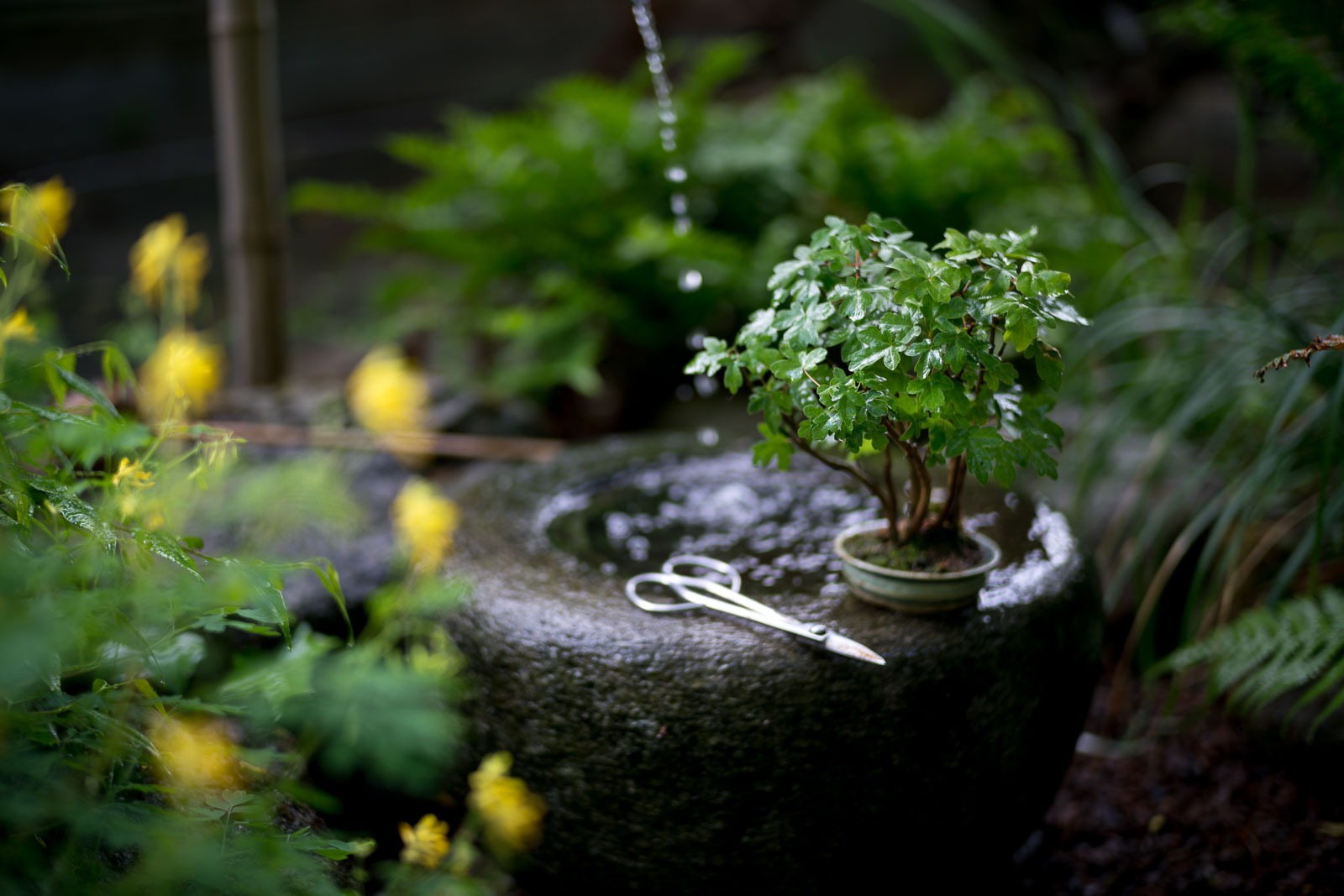
Shohin forest step two
After a full season of growth during 2019, it is now time to put attention into the development of the ramification. The forests of Field maples, Acer campestre, have settled well in the pots, and I am now pruning the leaves to make a tighter canopy and smaller branches. This is done by removing all large leaves and cutting back new extended growth ongoing. Letting light inside the trunks, and by adjusting the strong and weak parts, so they equalize.
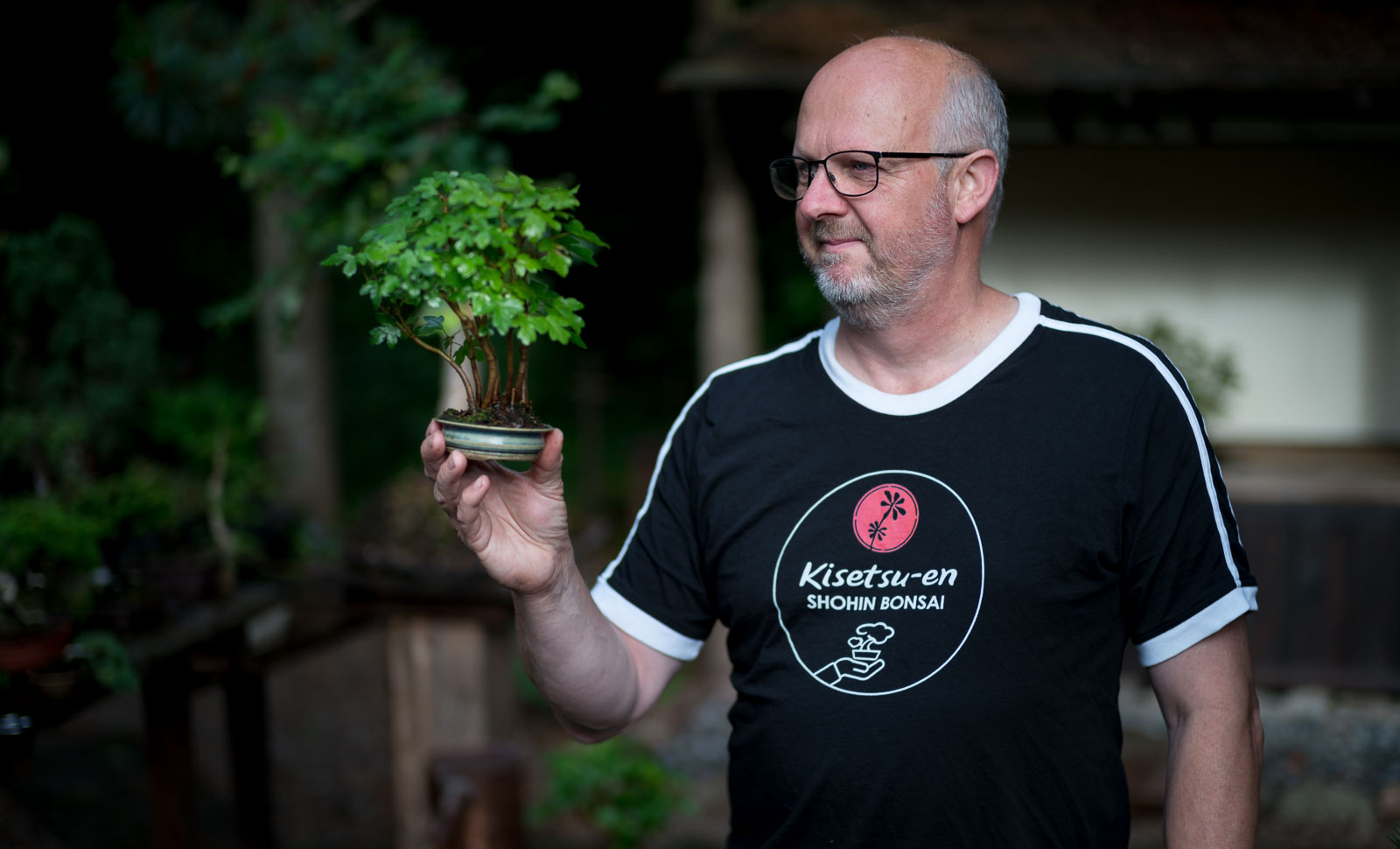
Slowly the matureness will evolve. Trunks and roots will grow together and be one. Therefore there will not be room for replacement of the trees after just a short time of growth. After two or three seasons of growth, it will be difficult, harmful, or even impossible to try dividing the trees. It is about placing the trees right the first time.
Landscape feeling
After five years of growth, I hope to have developed the branch formations so these are also show-worthy during wintertime.
When designing a forest, large or very small, the principle is almost the same. Trunks are placed with individual space and with the highest tree a little off-center for balance and naturalness. You look at a full picture of the trees as they where one trunk so to speak.

Each individual tree is part of the full image, and not developed individually in the Shohin size. We skip the idea of clearly chosen first branches and concentrates on the overall canopy shown by all the trees standing together in his small size. Larger bonsai forests will have room for styling each tree more in detail, but with the Shohin size, this melts together as one.
With a Shohin bonsai forest, you will have more the feeling of looking at the forest at a distance. Fitting very well with the idea of Shohin bonsai displaying a seasonal mood and a landscape feeling.
